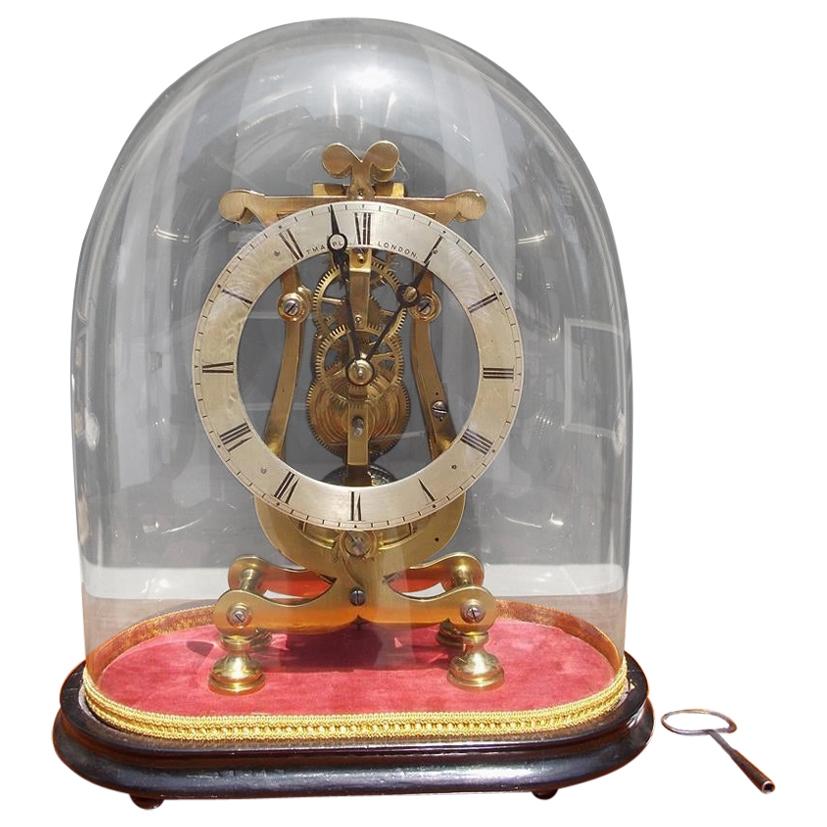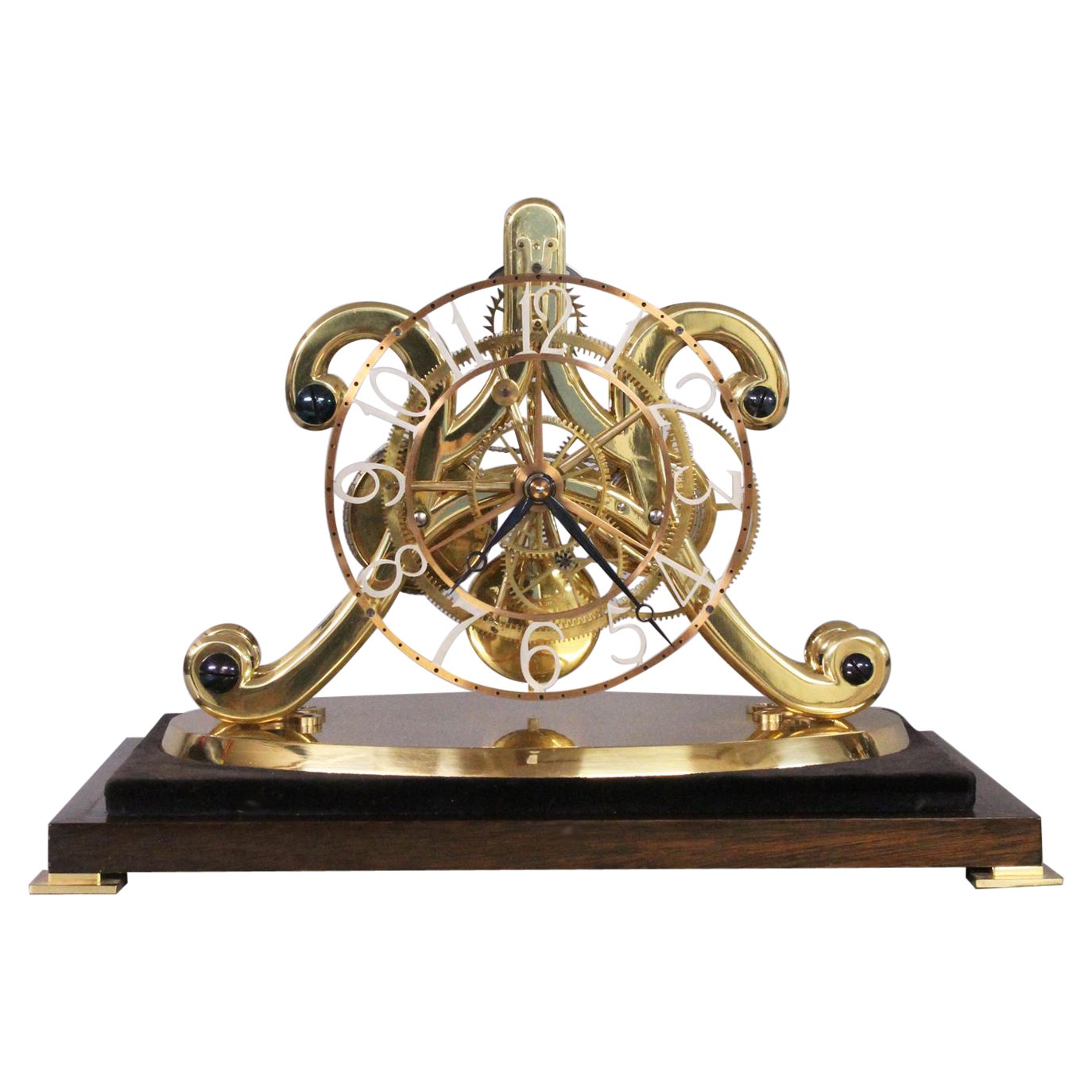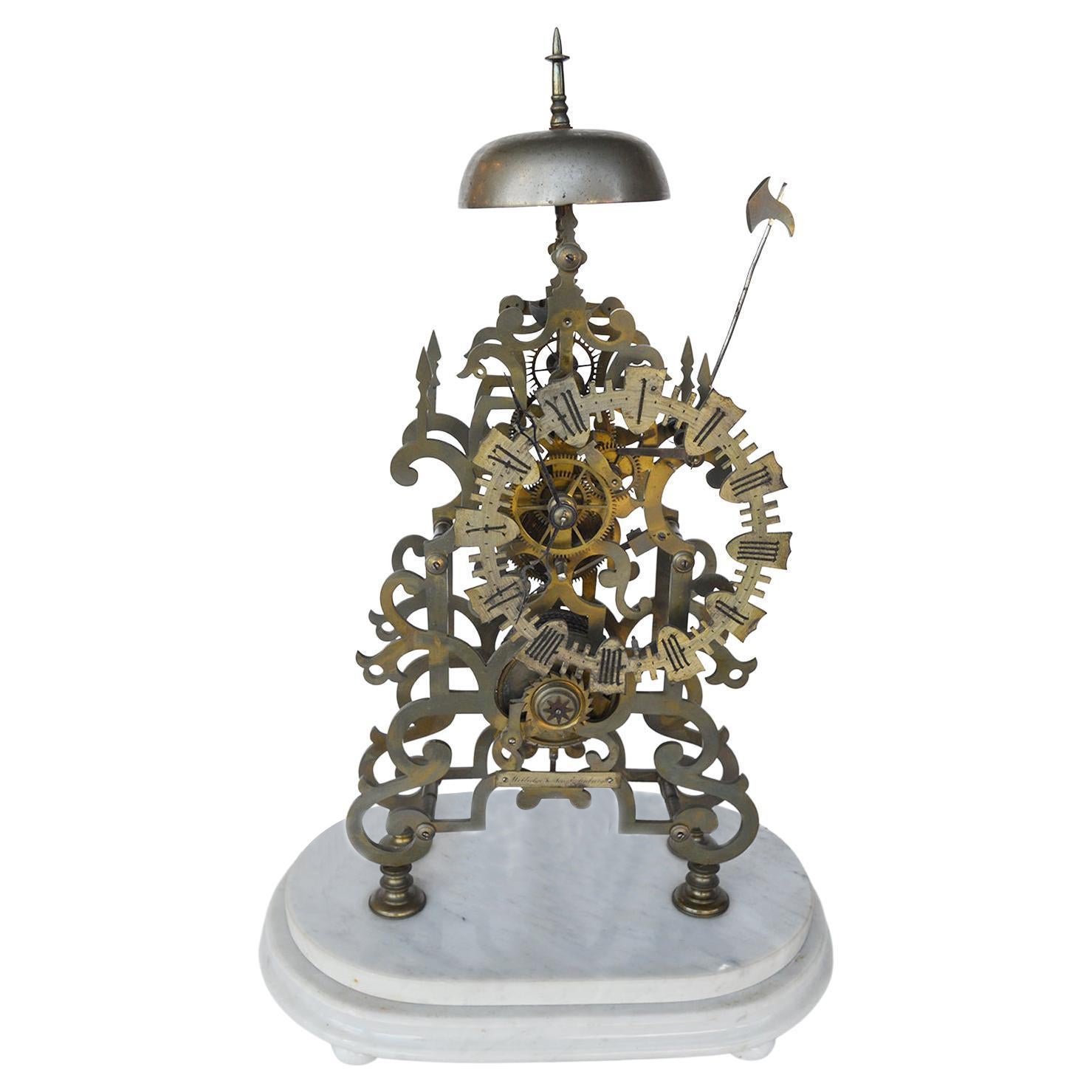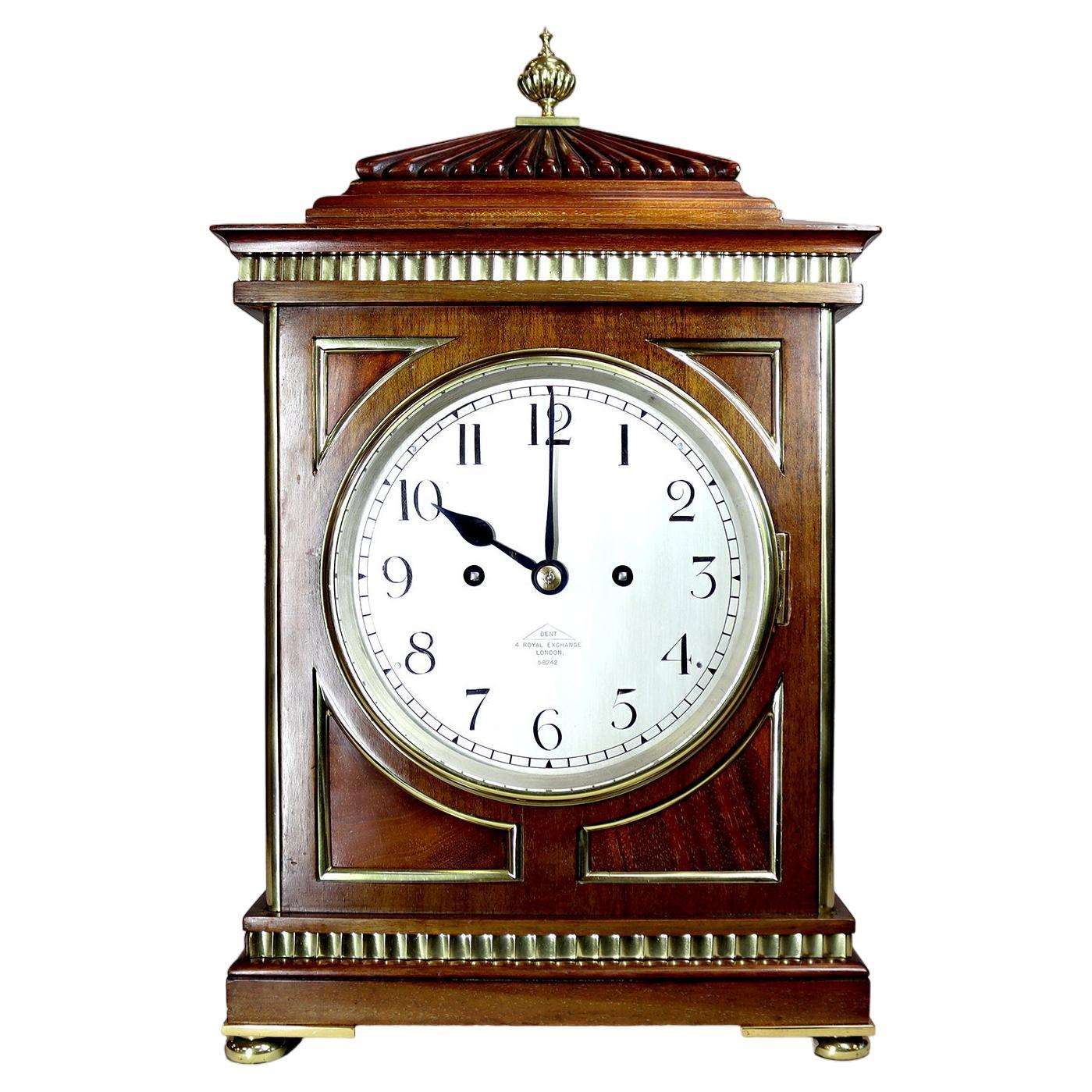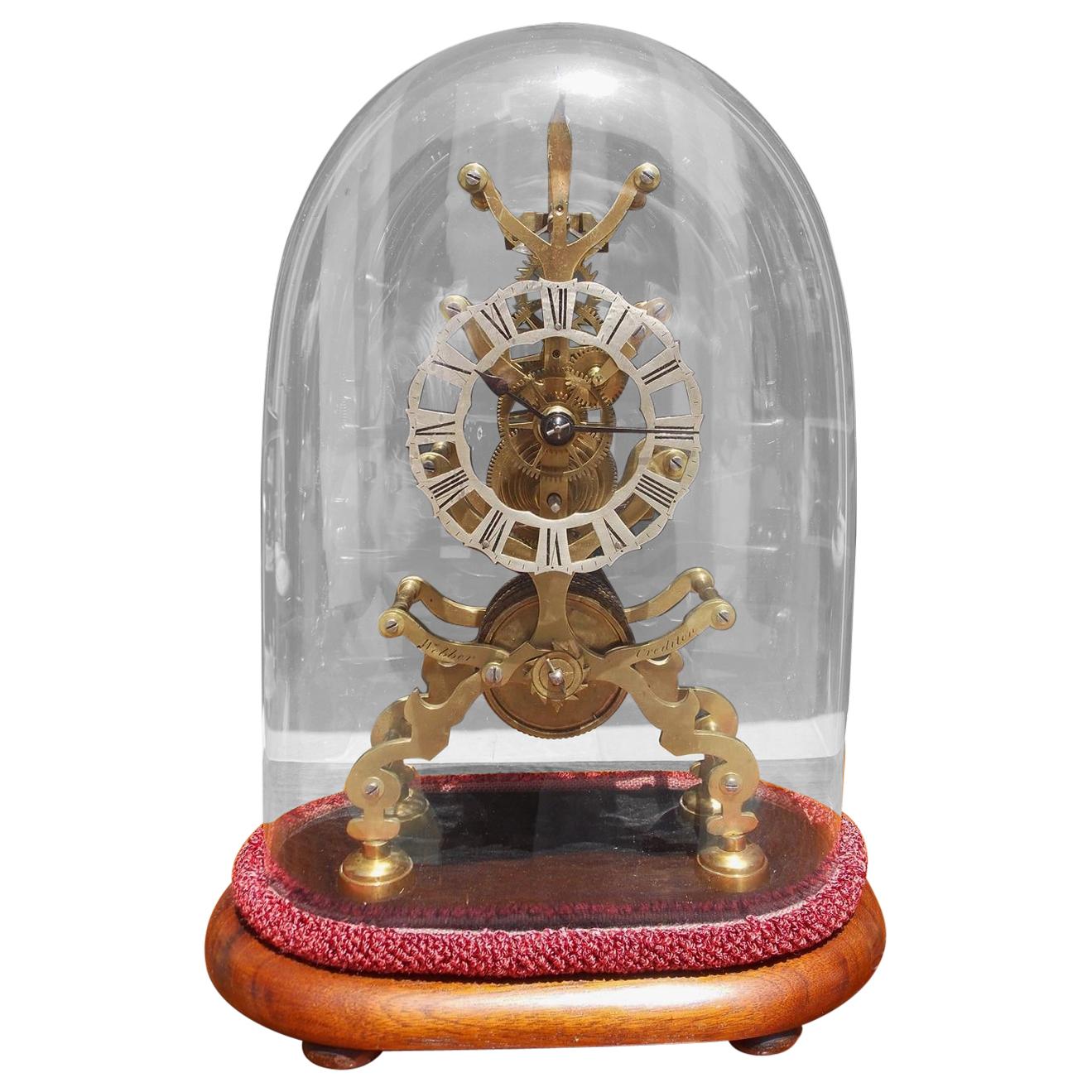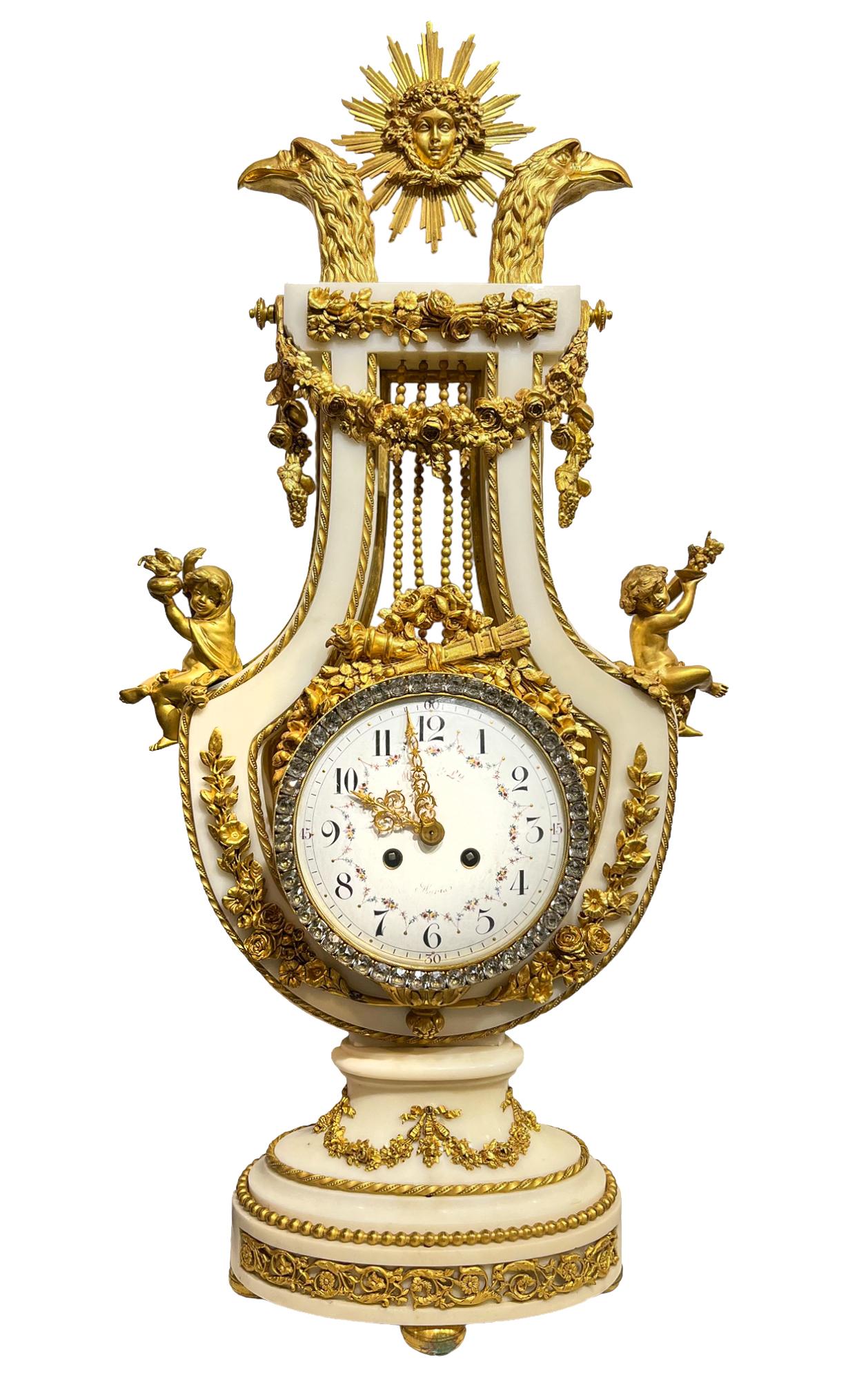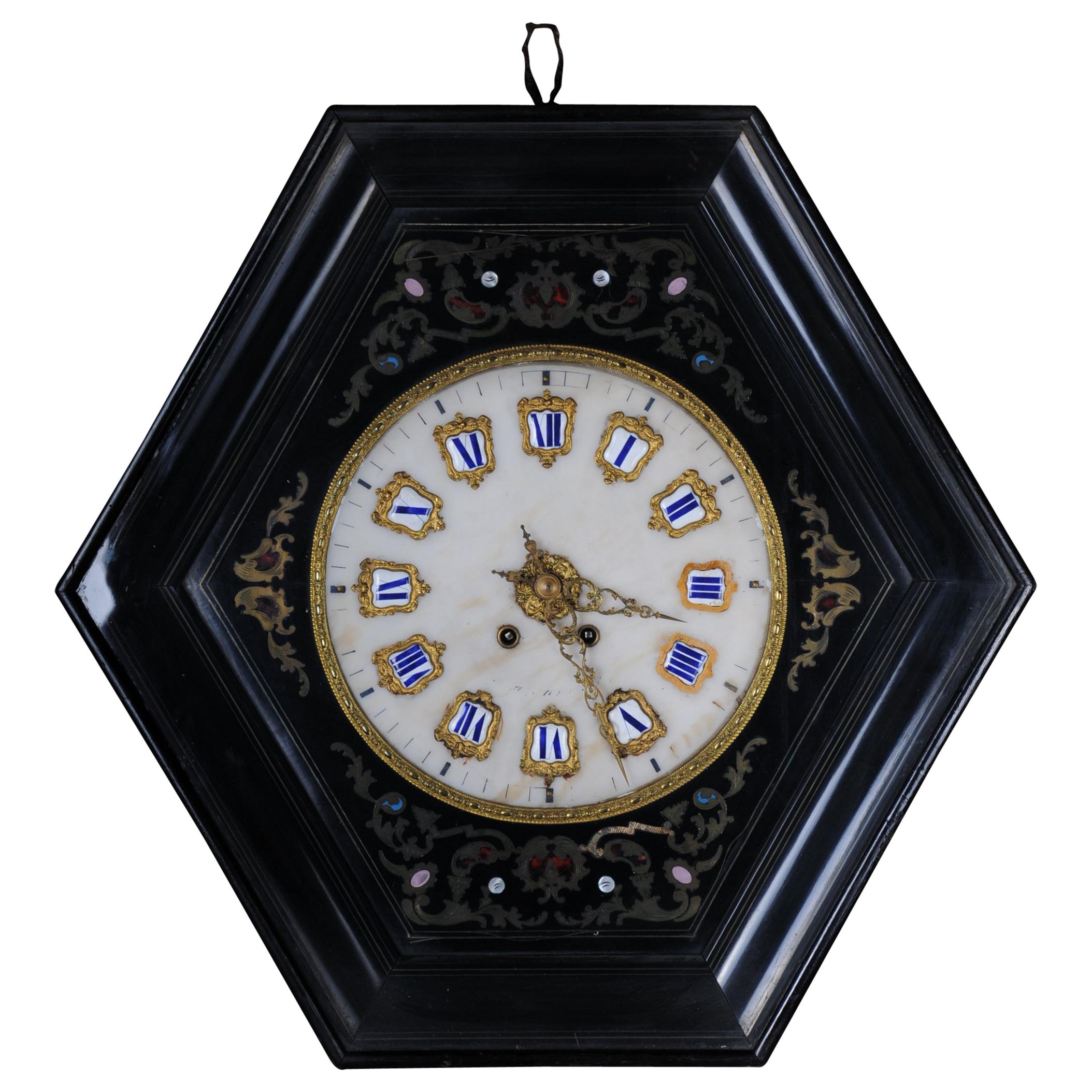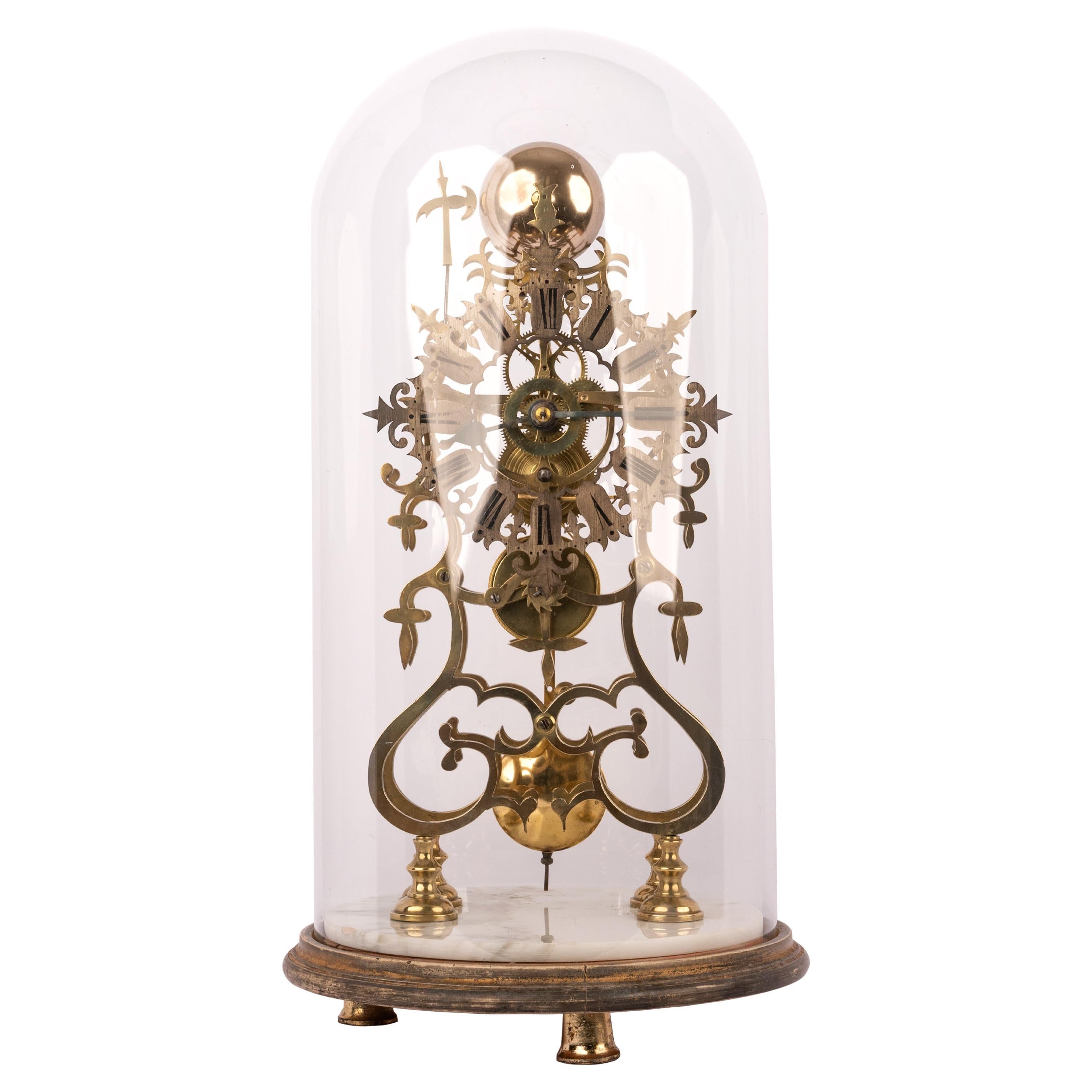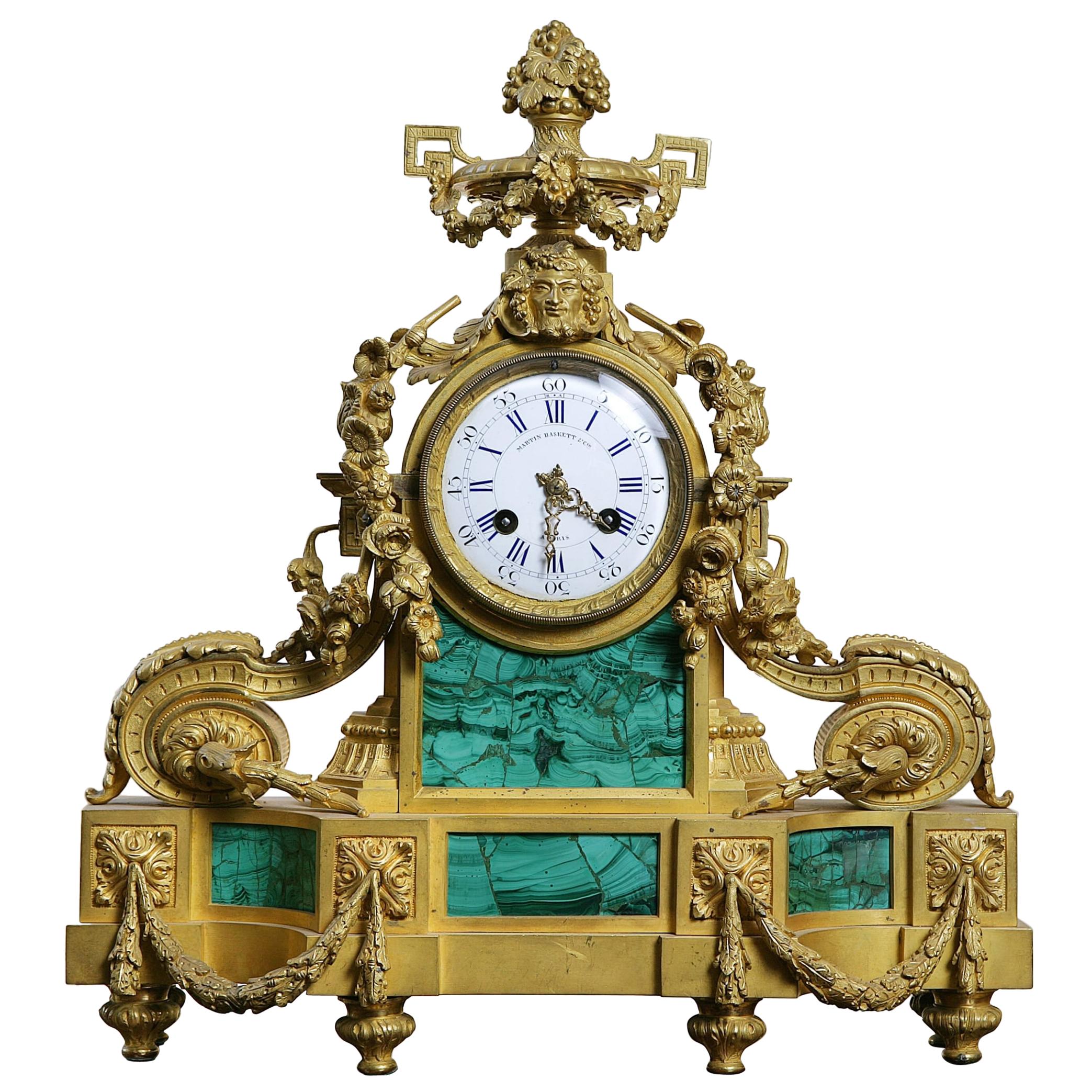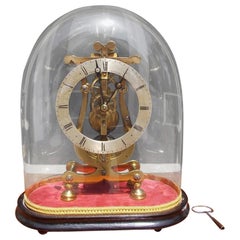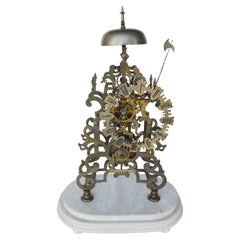
An English Brass Lyre-shaped Skeleton Clock, Dent's, Circa 1850
View Similar Items
1 of 7
An English Brass Lyre-shaped Skeleton Clock, Dent's, Circa 1850
About the Item
- Attributed to:Edward John Dent (Clockmaker)
- Dimensions:Height: 13.39 in (34 cm)Width: 11.03 in (28 cm)Depth: 6.7 in (17 cm)
- Materials and Techniques:
- Place of Origin:
- Period:
- Date of Manufacture:circa 1840
- Condition:Clock is good condition, movement has been checked and cleaned, runs well and keeps good time.
- Seller Location:Amsterdam, NL
- Reference Number:Seller: 2-0191stDibs: LU103641146984
You May Also Like
- English Brass & Polished Steel Skeleton Clock Under Glass Dome T. Mapple C 1850By T. MappleLocated in Hollywood, SCEnglish brass skeleton clock under original glass dome with a polished steel roman numeral dial, fusee chain movement, and affixed to an oval carved wood felt base with four bun feet...Category
Antique 1850s English Victorian Mantel Clocks
MaterialsSteel, Brass
- c. 1973 Replica of a Strutt Epicyclic Skeleton Clock by DentBy DentLocated in Greenlawn, NYMaker: Dent Originally designed by W. Wigston and W. Strutt c.1820. Dial: The skeletonized dial has white Arabic numbers for the hours, black dots for the minutes and steel...Category
Vintage 1970s English Mantel Clocks
MaterialsBrass
- Antique Skeleton Clock, France, circa 1900Located in Los Angeles, CAAntique skeleton clock, France, circa 1900.Category
Antique Early 1900s Wall Clocks
MaterialsMarble, Brass
- Edwardian Mahogany Bracket Clock, Dent, LondonBy DentLocated in Norwich, GBEdwardian Double Fusee Bracket Clock, Dent, London Edwardian bracket clock housed in a mahogany arch top case with inset front panel banded in brass with brass inlay, stepped plinth...Category
Antique Early 1900s English Table Clocks and Desk Clocks
MaterialsMahogany
- A Twin Fusee Bracket Clock By DentBy DentLocated in Amersham, GBA striking two train bracket clock of exceptional quality by one of the great nineteenth century makers. The eight day twin fusee movement strikes on a blued steel gong behind a silvered arabic dial, signed Dent and numbered 58242 on both th dial and the back plate. Housed in a solid mahogany case with brass mounts and a gadrooned pergoda top surmounted by an acorn finial, and supported by bun feet. The sides ar pierced with attractive fish scale sound vents lined with dark blue velvet. The movement and case are both of remarkable quality, as you would expect from a clock made by Dent. The history of Dent & Co. spans three centuries of precision watch and clock making in Great Britain. Established in 1814 by Edward J. Dent, the company embraced the Victorian fervour for technological innovation and created precision chronometers to navigate the Royal Navy and guide some of the most intrepid explorers on their voyages. The British Empire was in full expansion and its maritime tradition had produced some remarkable technological breakthroughs from the late 18th century. Propelling the impetus of Britain’s primacy, Dent proved a key player in Victorian horological history manufacturing the Standard Clock at the Royal Observatory, Greenwich which was to keep “Greenwich Mean Time” the time to which all others in the Empire were referred (better known today as G.M.T.) and continued to do so until replaced by an electronic clock in 1946. Dent also made probably the most famous clock in the world - the Great Clock for the Houses of Parliament, familiarly known as Big Ben. Dent’s reputation soared and their chronometers accompanied some of the century's most influential and colourful explorers. Dent chronometer...Category
Antique Early 1900s English High Victorian Mantel Clocks
MaterialsBrass, Steel
- English Brass and Polished Steel Skeleton Clock Under Glass Dome Webber, C. 1870By WebberLocated in Hollywood, SCEnglish brass skeleton clock under original glass dome with a polished steel roman numeral dial, fuse chain movement, and affixed to an oval carved wood felt base with four bun feet....Category
Antique 1870s English Victorian Mantel Clocks
MaterialsSteel, Brass
Recently Viewed
View AllMore Ways To Browse
Dent London
English Mahogany Clock
19th Century Skeleton
Dome Clock
Silver Anchor Chain
St John Ring
Roman Glass Ring
British Antique Clocks
Antique Clock Chain
Antique Anchor Chain
Dome Clocks Antique
Dome Clock Antique Clocks
Silver Fusee
Skeleton Clocks
English Fusee Clock
Bell Dome
Glass Dome Clock
Clock With Glass Dome
